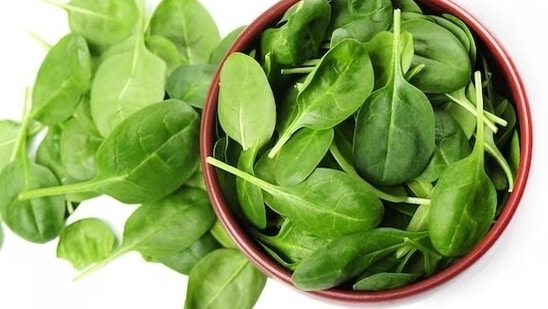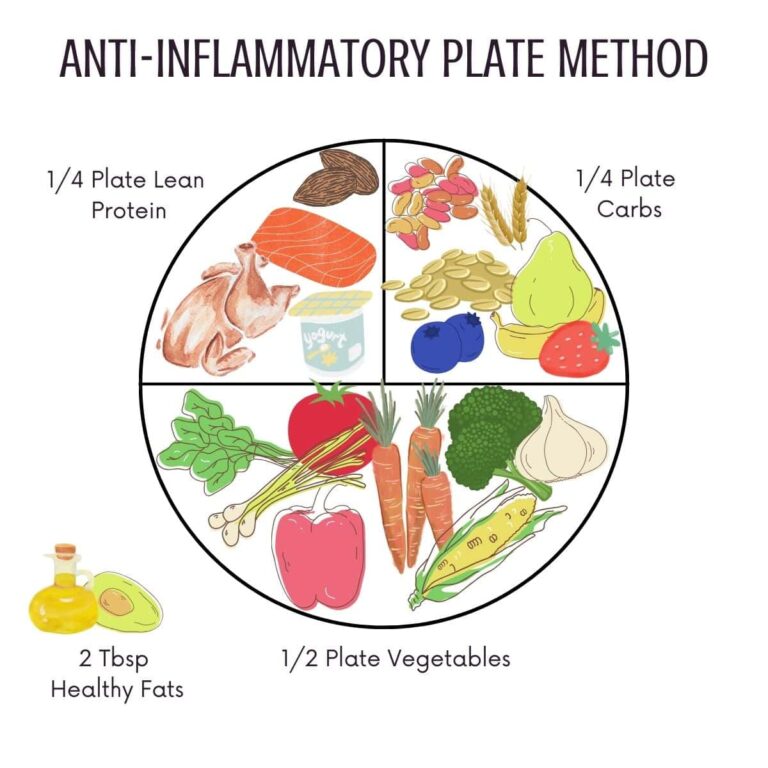Celery for Weight Loss: Does It Really Work? Unpacking the Stalk of Truth
In the relentless pursuit of effective, effortless weight loss, humanity has traversed a landscape littered with fads, quick fixes, and the ever-present allure of a “magic bullet.” From grapefruit diets to cabbage soup regimens, the spotlight often falls on singular foods elevated to almost mythical status. In recent years, a verdant, unassuming stalk has taken center stage in this narrative: celery. Its crisp texture, refreshing taste, and remarkably low-calorie count have fueled a fervent belief that this humble vegetable holds the key to shedding pounds, particularly propelled by the widespread popularity of celery juicing trends and detox claims.
But beyond the enthusiastic endorsements and viral social media posts, does celery truly possess the power to unlock sustainable weight loss? Or is its role more akin to a supportive character in a much larger, more complex story of health and metabolism? To answer this, we must embark on a journey that delves deep into celery’s nutritional composition, its physiological effects on the human body, the practicalities of its consumption, and ultimately, its rightful place within a holistic approach to weight management. For the knowledgeable audience, the nuances matter, and the distinction between a beneficial food and a miraculous cure is paramount.
The Verdant Blueprint: Unpacking Celery’s Nutritional Profile
Before we can assess celery’s impact on weight loss, we must first understand what it brings to the table – or rather, to the plate. Often dismissed as "just water and fiber," celery is, in fact, a deceptively nutrient-rich vegetable, albeit one with a remarkably low caloric density.
Let’s break down its essential components:
- Water Content: This is arguably celery’s most prominent feature. Comprising about 95% water, celery is an excellent source of hydration. This factor alone plays a significant, if often overlooked, role in satiety and overall bodily function, which indirectly supports weight management.
- Caloric Negligence: A single medium stalk (approximately 40 grams) contains a mere 6-8 calories. This extreme paucity of calories is the bedrock of the "negative calorie" myth, which we will address shortly. For practical purposes, it means you can consume a significant volume of celery without making a dent in your daily caloric budget.
- Dietary Fiber: The fibrous strings that often get caught between your teeth are precisely what makes celery a champion for digestive health and satiety. A medium stalk provides roughly 0.6 grams of fiber, primarily insoluble fiber. While this doesn’t sound like much, consuming multiple stalks can quickly add up, contributing to your daily fiber intake. Fiber is crucial for gut health, regularity, and sustained feelings of fullness.
- Vitamins and Minerals: Beyond the basics, celery boasts an impressive array of micronutrients:
- Vitamin K: Essential for blood clotting and bone health.
- Vitamin C: A powerful antioxidant that supports immune function and skin health.
- Vitamin A (in the form of beta-carotene): Important for vision, immune function, and skin health.
- Folate: Critical for cell growth and function.
- Potassium: An electrolyte vital for blood pressure regulation and nerve function.
- Calcium and Magnesium: Important for bone health, muscle function, and nerve transmission.
- Phytonutrients and Antioxidants: This is where celery truly shines beyond its basic nutritional data. It contains a wealth of plant compounds with potent health benefits:
- Flavonoids: Apigenin and luteolin are well-studied flavonoids in celery, known for their anti-inflammatory and antioxidant properties.
- Phenolic Acids: Caffeic acid and ferulic acid also contribute to its antioxidant profile.
- Phthalides: These unique compounds, such as butylphthalide, are responsible for celery’s distinctive aroma and are being studied for their potential cardiovascular benefits, including blood pressure reduction.
While no single food is a miracle cure, celery’s comprehensive nutritional profile suggests it’s far more than just "empty calories." Its benefits are subtle, synergistic, and contribute to overall health in ways that can, in turn, support weight loss efforts.
The Mechanics of Weight Loss: Where Celery Intervenes
With its nutritional blueprint laid out, we can now explore the specific mechanisms through which celery might contribute to weight management. It’s important to preface this by stating that celery is not a fat-burning accelerator or a metabolic stimulant in the way some supplements claim to be. Its influence is primarily indirect, working through well-established principles of nutrition and physiology.
A. The Satiety Factor: Fiber and Water as Allies
The most direct and widely acknowledged way celery aids in weight loss is by promoting satiety and reducing overall caloric intake.
- Volume Eating: The sheer volume of celery you can consume for very few calories is its superpower. Eating a large quantity of a low-calorie, high-volume food tricks the stomach into feeling full without contributing significantly to energy intake. This is a cornerstone of effective weight loss strategies, often referred to as "volume eating." When your stomach stretches, mechanoreceptors send signals to your brain indicating fullness, helping to curb overeating.
- Fiber’s Role in Satiety: The dietary fiber in celery plays a crucial role. Insoluble fiber, like that found in celery, adds bulk to the stool, promoting regularity and contributing to a feeling of fullness by slowing down the digestive process. When food moves more slowly through the gastrointestinal tract, you feel satiated for longer, reducing the urge to snack between meals. Furthermore, fiber can influence the release of gut hormones (like GLP-1 and PYY) that signal satiety to the brain, indirectly impacting appetite regulation.
- Hydration and Fullness: Given its high water content, celery contributes significantly to hydration. Dehydration can sometimes be mistaken for hunger, leading to unnecessary snacking. By consuming water-rich foods like celery, you help maintain optimal hydration, which can, in turn, help you better distinguish between true hunger and thirst. The temporary feeling of fullness from water also helps bridge gaps between meals.
B. Digestive Health and Metabolism: More Than Just Roughage
Celery’s impact extends beyond simple satiety, touching upon broader aspects of digestive health and metabolic function.
- Gut Microbiome Support: While celery’s fiber content isn’t as high as some legumes or whole grains, its contribution to overall fiber intake is beneficial for the gut microbiome. Dietary fiber acts as a prebiotic, feeding the beneficial bacteria in your gut. A diverse and healthy gut microbiome is increasingly linked to metabolic health, inflammation reduction, and even weight management. These beneficial bacteria produce short-chain fatty acids (SCFAs) like butyrate, which can have anti-inflammatory effects and may influence energy expenditure and fat storage.
- Inflammation Reduction: Chronic low-grade inflammation is now recognized as a significant contributor to obesity and related metabolic disorders. The powerful antioxidants and phytonutrients in celery – particularly flavonoids like apigenin and luteolin – possess potent anti-inflammatory properties. By helping to quell systemic inflammation, celery contributes to a healthier metabolic environment, which can indirectly support weight loss and prevent weight-related complications.
- Blood Sugar Regulation: While not a primary focus, the fiber in celery can play a minor role in moderating blood sugar responses. By slowing gastric emptying, fiber can lead to a more gradual rise in blood glucose after a meal, preventing sharp spikes and subsequent crashes that can trigger cravings and overeating. This glycemic control is beneficial for overall metabolic health and can be particularly helpful for individuals managing insulin resistance or type 2 diabetes.
- "Detoxification" Claims Debunked (and Re-evaluated): Popular culture often touts celery juice as a powerful "detox" agent. It’s crucial for a knowledgeable audience to understand that the human body has highly efficient detoxification systems (liver, kidneys, lungs, skin). No food or juice "detoxes" the body in the mystical sense often advertised. However, celery’s constituents do support these natural processes. The phthalides, for instance, have been studied for their potential to activate certain liver enzymes, and its high water content supports kidney function. So, while it doesn’t perform a magical cleanse, it provides nutrients that aid the body’s inherent detox pathways.
C. The "Thermic Effect of Food" (TEF) and the "Negative Calorie" Myth Revisited
The enduring myth of "negative calorie" foods often surfaces when discussing celery. The idea is that the energy required to chew, digest, and absorb celery exceeds the caloric content it provides, resulting in a net calorie deficit.
Let’s clarify:
- Thermic Effect of Food (TEF): This is the energy expended by the body for the digestion, absorption, and disposal of ingested nutrients. It accounts for about 10% of total daily energy expenditure. Different macronutrients have different TEFs (protein has the highest, fat the lowest).
- Celery and TEF: While celery requires some energy to digest, the amount is negligible. A 6-calorie stalk might require 0.5-1 calorie to process. So, you still gain a net of 5-5.5 calories. Celery is unequivocally not a negative-calorie food.
However, the myth persists because of its extremely low caloric density. You can eat a large amount of celery and still consume fewer calories than you would from a small portion of almost any other food. The psychological benefit of feeling full from a large quantity of food, even if it’s low in calories, is powerful and contributes to overall calorie reduction. So, while the science behind "negative calories" is flawed, the practical outcome – feeling full on minimal calories – is very real and beneficial for weight loss.
Celery in Practice: How to Harness Its Potential
Understanding the science is one thing; integrating celery effectively into a weight loss strategy is another. There are various ways to consume celery, each with its own benefits and considerations.
A. Raw & Unadulterated: The Simplest Approach
This is perhaps the most straightforward and beneficial way to enjoy celery, especially for weight loss.
- Snacking: Eating raw celery sticks between meals is an excellent way to curb hunger without adding significant calories. The satisfying crunch also provides a psychological benefit.
- Salads and Crudités: Chopped celery adds texture, freshness, and nutrients to salads. Served as part of a crudités platter, it offers a healthy alternative to chips or crackers.
- Maximum Fiber Retention: Consuming celery raw ensures you get all its dietary fiber, which is crucial for satiety and digestive health. Cooking can slightly degrade some fiber components and water-soluble vitamins.
- Oral Health: The fibrous nature of raw celery acts like a natural toothbrush, helping to clean teeth and stimulate saliva production, which can neutralize acids and protect against tooth decay.
B. Juicing Celery: The Trend and Its Nuances
The celery juice phenomenon has undoubtedly been the biggest driver of celery’s recent popularity in the wellness sphere.
- Pros: Juicing concentrates certain nutrients, making them potentially more readily absorbable for some individuals. It also provides a significant dose of hydration. For those who struggle to eat enough vegetables, juicing can be an accessible way to consume celery’s beneficial compounds.
- Cons: The most significant drawback of juicing celery for weight loss is the loss of fiber. The pulp, which contains the majority of the insoluble fiber crucial for satiety and gut health, is discarded. This means that while celery juice is low in calories, it doesn’t offer the same sustained fullness as whole celery. Consequently, relying solely on celery juice might leave you feeling hungry sooner, potentially leading to overconsumption of other foods.
- No Magic Cure: It’s vital to manage expectations. Celery juice is not a miracle detox, a cancer cure, or a rapid weight loss elixir on its own. While it can be a healthy addition to a balanced diet, attributing extraordinary powers to it without scientific backing is misleading.
- Context is Key: If you enjoy celery juice, consider it as part of a balanced diet, not as a replacement for whole foods. Ensure you’re still getting adequate fiber from other sources.
C. Cooked Celery: Adding Flavor and Texture
Celery is a versatile vegetable that can be incorporated into countless cooked dishes.
- Soups, Stews, and Stir-fries: Celery is a foundational aromatic vegetable in many cuisines, often used in a mirepoix (celery, carrots, onions) or sofrito. It adds a subtle, savory flavor and a pleasant texture.
- Nutrient Stability: While some heat-sensitive vitamins (like Vitamin C) might be slightly reduced by cooking, others remain stable, and some compounds might even become more bioavailable.
- Increased Consumption: For those who find raw celery too intense or fibrous, cooking can make it more palatable, allowing for greater consumption. Adding it to meals can increase the overall vegetable content and add volume without significant calories.
D. Practical Integration Strategies for Weight Loss
To maximize celery’s potential in your weight loss journey, consider these strategies:
- Replace Higher-Calorie Snacks: Instead of reaching for chips or cookies, opt for a few stalks of celery with a modest serving of hummus or a small amount of nut butter.
- Add Bulk to Meals: Incorporate chopped celery into salads, stir-fries, omelets, or wraps to increase the volume and fiber content without significantly raising calories.
- Pre-Meal Appetizer: Eating a few celery sticks with water before a meal can help reduce your appetite, leading you to eat less of the main course.
- Make it a Staple: Don’t view celery as a temporary "diet food." Integrate it regularly into your diet as a healthy, versatile vegetable.
The Caveats and Considerations: What Celery Can’t Do
While celery is undoubtedly a healthful food and a valuable ally in weight management, it is critical to ground our understanding in reality. No single food, including celery, can independently orchestrate sustainable weight loss.
A. Not a Magic Bullet
The most important caveat is that celery is not a magic bullet. Weight loss is a complex interplay of various factors:
- Caloric Deficit: Ultimately, to lose weight, you must consume fewer calories than you expend. Celery helps achieve this by promoting satiety for minimal calories, but it doesn’t directly burn fat.
- Balanced Nutrition: Relying solely on celery or any single food for weight loss will lead to nutritional deficiencies and an unsustainable approach. A truly effective weight loss plan emphasizes a variety of whole foods, including lean proteins, healthy fats, complex carbohydrates, and a wide array of fruits and vegetables.
- Physical Activity: Regular exercise is crucial for burning calories, building muscle mass (which boosts metabolism), and improving overall health.
- Lifestyle Factors: Adequate sleep, stress management, and mindful eating practices all play significant roles in regulating hormones that influence appetite and metabolism.
B. Potential Downsides and Considerations
While generally safe and beneficial, a few considerations exist:
- Sodium Content: Celery contains a moderate amount of natural sodium (around 35mg per stalk). While not excessively high, individuals on very low-sodium diets should be mindful, especially if consuming large quantities.
- Pesticide Residue: Celery consistently ranks high on the Environmental Working Group’s "Dirty Dozen" list, indicating a higher likelihood of pesticide residues. Opting for organic celery or thoroughly washing conventional celery is advisable.
- Allergies: Although rare, some individuals can be allergic to celery, experiencing symptoms ranging from oral allergy syndrome (itching in the mouth) to more severe anaphylaxis.
- Diuretic Effect: Celery has a mild diuretic effect due to its high water content and certain compounds. While generally harmless and even beneficial for flushing toxins, individuals already taking diuretic medications should consult a healthcare professional.
- Not Nutritionally Complete: As emphasized, celery lacks sufficient protein, healthy fats, and a full spectrum of vitamins and minerals needed for optimal health. It should complement, not replace, a diverse diet.
C. The Importance of Variety
Even the most fervent celery enthusiast would agree that eating nothing but celery is unsustainable and unhealthy. The human body thrives on diversity. Each fruit, vegetable, grain, and protein source offers a unique profile of micronutrients and phytonutrients. Incorporating a wide array of plant-based foods ensures you receive all the necessary building blocks for optimal health and efficient metabolic function. Celery is a fantastic addition, but it should be part of a vibrant culinary tapestry.
Beyond Celery: A Holistic Approach to Sustainable Weight Management
The story of celery for weight loss ultimately reveals a truth applicable to many "superfoods": it’s a valuable tool, but never the entire toolbox. Its high water and fiber content, coupled with its negligible caloric density, make it an excellent choice for promoting satiety and reducing overall caloric intake. Its rich array of vitamins, minerals, and phytonutrients further supports general health, which indirectly contributes to a body primed for weight management.
However, genuine, sustainable weight loss is a journey, not a destination reached by any single food. It requires a comprehensive, integrated approach that encompasses:
- A Balanced Diet: Emphasizing whole, unprocessed foods; adequate protein for satiety and muscle preservation; healthy fats for hormone regulation and nutrient absorption; and complex carbohydrates for sustained energy.
- Regular Physical Activity: A combination of cardiovascular exercise for calorie expenditure and strength training for muscle building and metabolic boost.
- Mindful Eating: Paying attention to hunger and fullness cues, eating slowly, and savoring meals to foster a healthier relationship with food.
- Adequate Sleep: Essential for regulating hunger hormones (ghrelin and leptin) and managing stress.
- Stress Management: Chronic stress can lead to increased cortisol levels, which can promote fat storage, particularly around the abdomen.
- Professional Guidance: Consulting with a registered dietitian or healthcare provider can offer personalized strategies and ensure a safe and effective weight loss plan tailored to individual needs.
Conclusion: Crunching the Numbers and the Reality
So, does celery really work for weight loss? The answer is a resounding yes, but with significant caveats. Celery is an incredibly healthy, low-calorie, high-fiber, and hydrating vegetable that can be a highly effective aid in a weight loss strategy. It helps you feel full on minimal calories, supports digestive health, and provides valuable micronutrients and antioxidants that contribute to overall metabolic well-being.
However, it is not a standalone solution, a magic bullet, or a substitute for a balanced diet and healthy lifestyle. Its power lies in its ability to support and enhance a comprehensive approach to weight management. Embrace celery for its undeniable health benefits and its practical utility in curbing hunger without caloric excess. Enjoy its crisp texture, refreshing taste, and nutritional bounty. But temper expectations of miraculous transformations. The true "magic" of weight loss resides not in a single stalk, but in the consistent cultivation of healthy habits that nourish both body and mind. Celery, in its humble yet potent way, can certainly be a crunchy, green step in the right direction.







